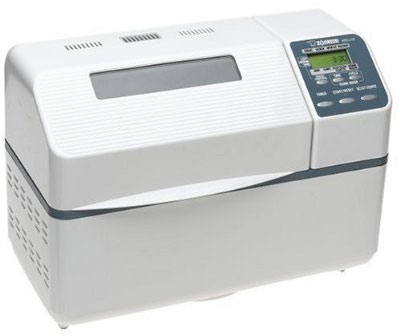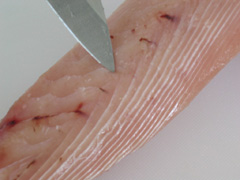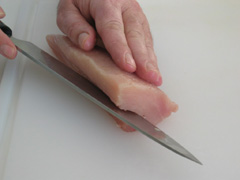For the only three reasons that humans do anything nice: to avoid intercultural embarrassment and civil strife, to get snappy service, and to impress the people they make company with.
The Tools
At some of the higher end restaurants the waiter/waitress will provide you with a hot towel at the beginning of the meal. It usually comes in a little basket. Use it to wipe your hands clean before the meal, remember sushi is finger food. When finished place it back in it’s basket and someone will take it out of your way. Don’t worry, you'll also get a napkin for your lap.
They're not toothpicks or drumsticks, they're chopsticks. Don't poke or beat things with them. Actually the real name for chopsticks is hashi. Impress the staff by asking for them by their rightful name. Hashi sometimes come as conjoined twins. Break them apart delicately, and rub them across each other to remove any burrs before you eat. (A burr is a splinter that has not yet left its mother wood and imbedded itself in your flesh.) Some sushi chefs find this offensive, especially in Japan. It may imply that you think the owner is cheap.
 How To Use Chopsticks
How To Use Chopsticks Think of the chopstick as a pair of prongs, the only difference being that there are two separate parts or sticks. One stick is held in stationary position and the other is moved.
- Take one stick first and hold it in your right hand in the way you would normally hold a pencil. If the stick has a thick and a thin end, hold it so that the thick end is to the top.
- Keeping the fingers in this position, turn your hand inward until the stick is horizontal to the table and parallel to your body.
- Relax your fingers slightly and slide the stick to the left until your thumb and forefinger are clamping the stick at about its mid-point. The thumb should not be bent or rigidly straight. All your fingers should be curved slightly inwards with the middle finger in contact with the underside of the stick and the tip of the middle finger pointing towards your body. The third (ring) finger should be in line with the middle finger but its tip should protrude beyond the middle finger towards your body.
- Now, take the other stick with your left hand and let the thick end rest on the protruding part of the ring finger of your right hand. Slide the stick towards the right, touching the tip of the middle finger and passing under the thumb until the thick end rests at the base joint of your forefinger. This is the stationary position of this stick, and it should be roughly parallel to the first stick.
- Alternately bend and extend your forefinger and middle finger, letting the first stick PIVOT at the thumb. The thin tip of the moving stick will touch that of the stationary stick when you bend the two fingers. Don't hold the sticks rigidly. Hardly any pressure or strength is needed to grasp things at the tip of the chopsticks.
Those Crazy Little Plates and Stuff
There will be a small ceramic block called a hashi oki on which to set your hashi when not in use. To the right of your place setting, there will be a small oblong ceramic saucer which will hold the soy sauce, or shoyu. DO NOT pour the shoyu straight from the jug onto your sushi. Pour the shoyu into its proper saucer — a small oblong dish called a kozara — and dip the sushi into it.
The Dining Method
The Soup
With Miso Soup (misoshiru) or Clear Broth (suimono), you may use your chopsticks to pick out the solid pieces. Feel free to drink the soup as you would a cup of tea. Slurping noises are not considered bad manners, so have at it.
The Condiments
The thinly-sliced pink ginger on your plate is called gari. Eat just a slice between pieces of sushi to re-enliven your palate. The shredded white radish, called daikon, is for cleansing your palate between different orders. Wasabi is the little green chunk of horseradish paste that some often mix with shoyu as a sauce for dipping sushi. If you aren't used to eating wasabi, be forewarned: when eaten full strength, it has an electric effect on the sinuses that can make a strong man weep openly.
Passing sushi and sashimi
NEVER pass sushi to another diner using your hashi. Pass them the plate so they can pick it up themselves. Always pick the sushi up off the plate with the other end of the hashi - the end that doesn't go in your mouth. And of course, never yell "go long!" or "incoming!" and then huck sushi across the table.
Eating sushi and sashimi
Pick up the sushi, turn and dip the fish part, not the rice, into the soy sauce-wasabi mixture, and put the whole portion in your mouth, flipping the sushi so that the fish is on your tongue. NEVER bite a piece of sushi in half and put half back on your plate. Always eat the whole thing. And one special note - never leave rice after a meal. It's considered rude to leave food after a meal, but leaving rice is considered especially rude. Sushi is finger food. It's okay to pick it up with your hands if you like. Sashimi, however, is not. Only use your hashi to eat sashimi.
Sushi bar etiquette
NEVER smoke in a sushi bar, even if there is an ashtray provided. I know, it sounds crazy, but think about it: smoke will interfere with the flavor of everyone's sushi. Therefore, to smoke is to be disrespectful to the chef's work. You may be feeling gregarious after a few shots of sake. If so, offer a drink to your sushi chef. He doesn't expect it, but if you have a drink with him, he will toast with Kampai! (to your health).
Final nuggets
Never expect the chef to handle money. Those who handle food do not handle money. This rule will make perfect sense to you if you've ever been to a strip club. Even though some of these rules may seem extreme to Westerners, remember that your hosts will probably not call any breach of etiquette to your attention. To do so would be considered rude.
Zojirushi Home Bakery Supreme Bread Machine - Home Breadmaking Machine
 You can buy the Zojirushi Home Bakery Supreme Bread Machine at Amazon.com for only $189.04 and this item ships for FREE with Super Saver Shipping. You will save $75.96 (29%).
You can buy the Zojirushi Home Bakery Supreme Bread Machine at Amazon.com for only $189.04 and this item ships for FREE with Super Saver Shipping. You will save $75.96 (29%).
The Zojirushi Home Bakery Supreme Bread Machine is a state-of-the-art bread maker that combines a range of automatic controls with easily tailored options. Its 10 cycles are designed for making everything from wheat bread to cinnamon rolls and can also be put to work for non-bread items like cakes, fruit jam, and homemade meatloaf.
Versatile controls let you use the dough-only function or make a loaf from start to finish, and handy programming options include a sourdough starter, a 2-hour quick-baking cycle, and three crust settings.
The timer allows you to set all controls up to 13 hours ahead, and three memory settings store your most-used recipes.
Built with a durable plastic body, the Zojirushi Home Bakery Supreme Bread Machine has many structural plusses, including twin kneading paddles, a broad viewing window, and an angled control panel. A welcome alternative to the cylinder-shaped bread maker pans, the nonstick baking pan here turns out traditionally shaped, 2-pound loaves. Streamlined and manageable, the unit measures 16-3/4 by 12 by 8-1/2 inches and comes with a detailed manual, a recipe booklet, and a how-to video. Zojirushi includes a limited 1-year warranty.
READ MORE ABOUT THIS BREAD MAKER...





